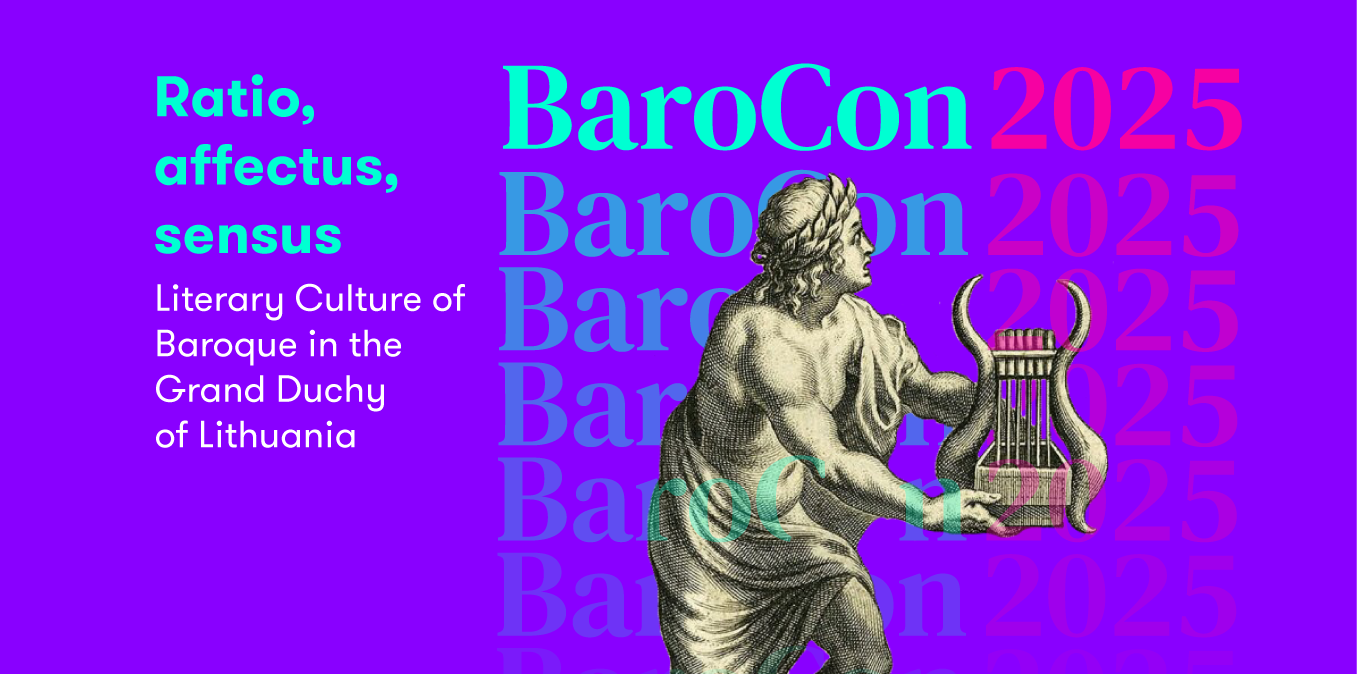Ratio, affectus, sensus: Literary Culture of the Baroque in the Grand Duchy of Lithuania
In 2025, we will commemorate the 400th anniversary of the first publication of Matheus Casimirus Sarbievius' most famous Latin poetry collection 'Lyricorum libri tres' (1625). This has led to 2025 being declared the Year of Baroque Literature in Lithuania. The eminent Jesuit neo-Latin poet of the Polish-Lithuanian Commonwealth, Sarbievius, has been hailed as the Christian Horace and the Sarmatian Horace. His theoretical thoughts on poetry and rhetoric are still highly regarded and have inspired new research on other concurrent themes and authors. This anniversary provides an opportunity to explore the extent and diversity of Baroque literary culture, which has seen a surge of interest in recent decades, both in the academic world and in popular culture. Therefore, the Institute of Lithuanian Literature and Folklore, together with the Faculty of Philology of Vilnius University, is organising an international academic conference "Ratio, affectus, sensus: Literary Culture of the Baroque in the Grand Duchy of Lithuania" on 25-27 September 2025 in the baroque city of Vilnius.
The aim of the multidisciplinary conference is to stimulate discussion on the literary culture of the "long seventeenth century" (from the end of the 16th century to the middle of the 18th century) in the Grand Duchy of Lithuania. This historical period, associated with dramatic changes and a general cultural crisis, is often described in contradictory terms and in constant tension between reason and senses, rigid structure and passions, classifications and impressions, etc. By embracing this contradiction, we invite an exploration of the theme in question through the lens of this dynamic interplay between reason (ratio), emotion (affectus) and the senses (sensus), which can be perceived in various genres of the period, such as poetry, biography, hagiography, rhetoric, private and public correspondence, and so on. The importance of the modern approach lies not only in what it can reveal about the Baroque in the Grand Duchy of Lithuania, but also about subsequent and contemporary literary culture, as scholars have demonstrated the continuing influence of a 'Baroque spirit'.
Event location
25–26 September the conference will take place at V. Krėvė (118) auditorium, Faculty of Philology
27 September the conference will take place at the Church Heritage Museum, Šv. Mykolo g. 9 (entrance from Maironio g. "Arkangelo konferencijų centras")
Keynote speakers

Ona Dilytė-Čiurinskienė
Senior Researcher, The Institute of Lithuanian Literature and Folklore
Prof Stephen Harrison
Professor of Latin literature, University of Oxford
Frans-Willem Korsten
Two Republican Baroques: The Dutch Republic and the Polish-Lithuanian Commonwealth
Frans-Willem Korsten
Leiden University
Two Republican Baroques: The Dutch Republic and the Polish-Lithuanian Commonwealth
Keywords: sovereignty, republic, republican Baroque, network, empire
In 1635 the most famous Dutch poet of his times, Joost van den Vondel, wrote a poem entitled “The Truce between Poland and Sweden.” Vondel’s interest in the truce and the region was clearly motivated by the vast trade interests the Dutch Republic had in the Baltic. There were also cultural-political interests, however. As opposed to a royal, papal, Southern-European dominated Baroque, the Dutch Republic came to life aesthetically and politically through a Northern-European, republican Baroque. The latter connoted a conceptualization of sovereignty that was both unstable and powerful. Unstable because it did not depend on one, coherent, center of supreme power but on a complex trade-network of cities and states. Still, this bottom-up network also came to embody an imperial power. Here the Dutch Republic resonated with the Polish-Lithuanian Commonwealth. Both had mutual interests commercially speaking, since for Amsterdam trade with the region was defined as Moedernegotie: the mother of trades. Yet the two also had political resonances since the Commonwealth was far from a regular kingdom and was also indicated as the First Polish Republic. Its “Golden Liberty” prefigured in a sense the Baroque epitome of the Dutch Republic: the period of “True Freedom”. Following two Dutch diplomatic missions, in 1627–28 and 1635, I will first consider Paul Hulsenboom’s analysis of how diplomacy and poetry were intrinsically related at the time. Then I will consider a more radical entanglement of politics and aesthetics in that the Dutch Republic found a Baroque companion in the Polish-Lithuanian Commonwealth, which consisted as much in a bottom-up network instead of being ruled by a supreme power. Both, that is, found an aesthetic expression of their political nature in a republican Baroque.


